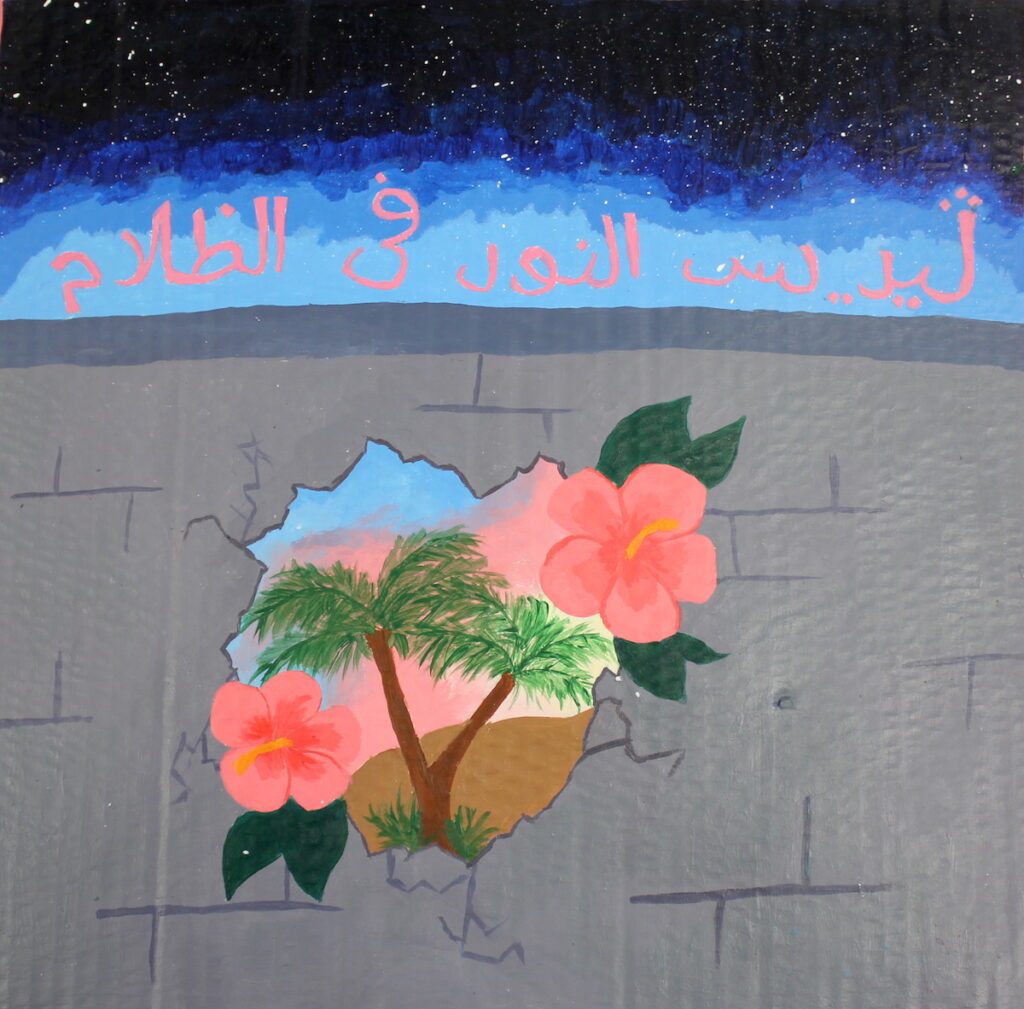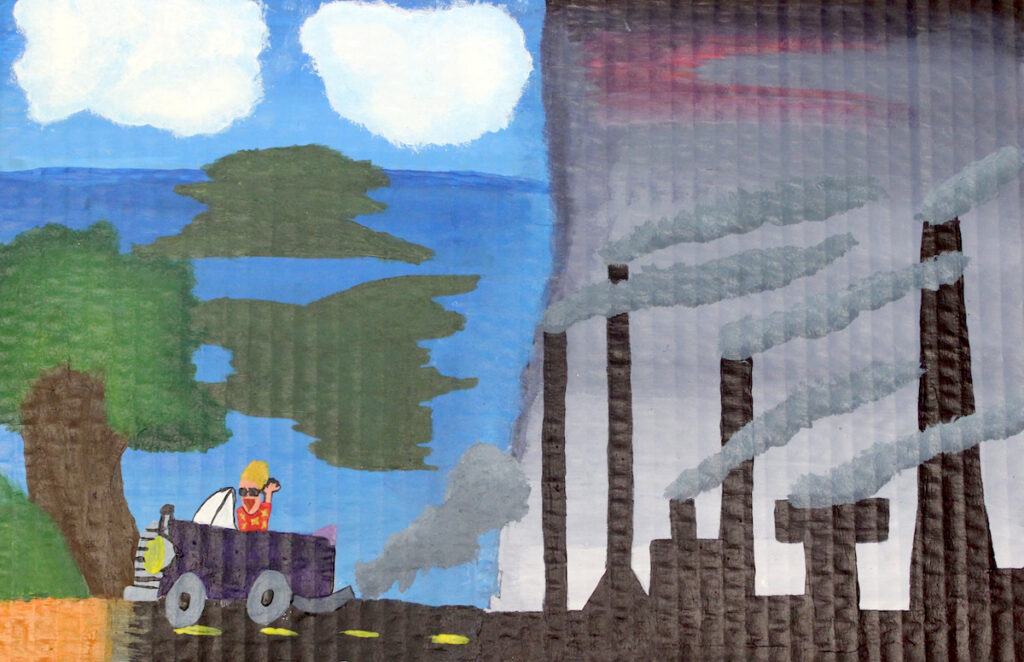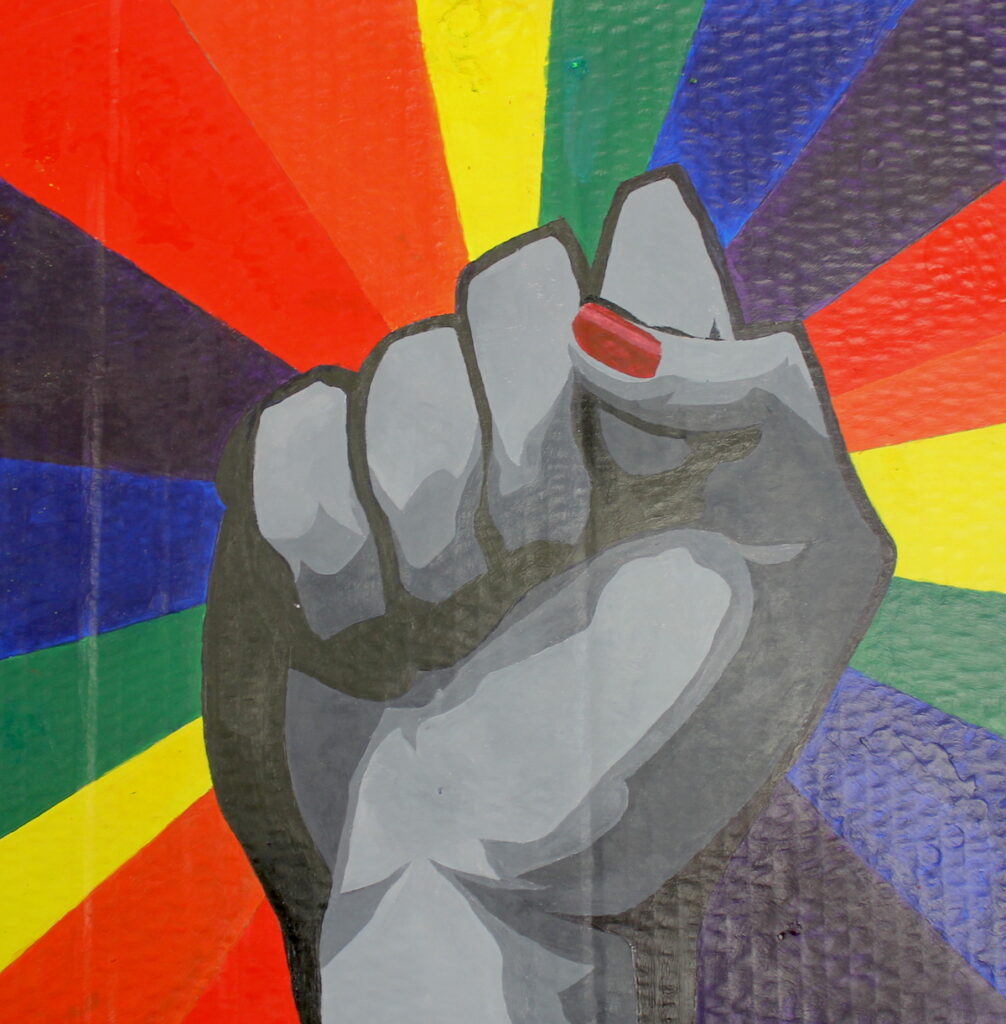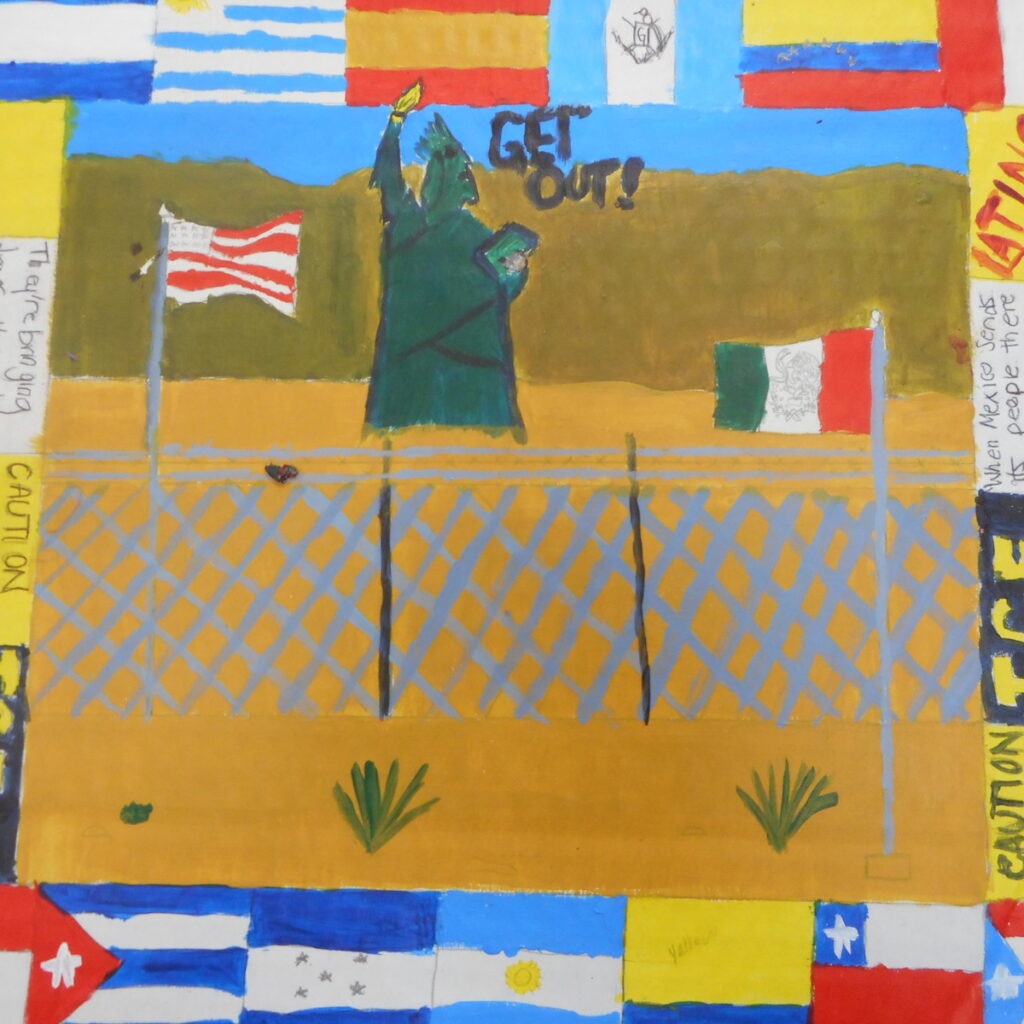Do controversial topics like politics and religion belong in the art room? In short, absolutely.
Throughout human history, art has served as the way we document and communicate our ideas about these subjects. Our students come to school aware of and impacted by the world around them. If we shy away from helping them investigate real-life issues and beliefs, we are missing a powerful educational opportunity.
The Purpose of Education
Take a minute to think about the purpose of education. Is it not to prepare students for the world? To help them develop critical thinking skills? To allow them to develop and understand what they believe and why they believe it?

More importantly, if students are to survive and thrive in a global community, shouldn’t we be educating students in a way that will improve relationships between people with vast differences?
These are important ideas to contemplate as we think about how we run our classrooms.
In his book, Education and the Significance of Life, author Krishnamurti urges, “the school should encourage the children to understand one another’s difficulties and peculiarities, moods, and tempers; for then, as they grow up, they will be more thoughtful and patient in their relationship with others.”
If we as educators do not guide the investigation of sensitive topics, how will students practice engaging in meaningful discussion with people who disagree with them?
Art gives students an opportunity to practice researching, creating, reflecting, and initiating dialogue in constructive ways.

But what does this look like in the classroom?
Let’s say you’ve assigned an upcoming project with the prompt “Create a piece that communicates a message or belief.” To begin, you guide students through an investigation of some current events and issues. Then, you ask them to choose an issue that is important to them.
After some thought, some students propose creating work about the legalization of marijuana. How do you respond? Instead of shying away from such a subject, as educators, we can help the students approach it from an investigative standpoint.
The key is to present as many points of view as possible, whether or not you let the students in on your own views. You may want to present articles, video clips, or even art exemplars that address the issue from all sides. After the student has spent time researching, you can hold an in-depth discussion.
After that, the students are left to choose. Do they want to continue pursuing the work? How have their beliefs been changed or solidified? Will those revelations impact their work? Do students have to do an art piece about legalization? Not at all. There is no mandatory work on any one topic or opinion whatsoever.
The Impact on Students
When we have art projects that challenge students to take a stand or to communicate an opinion based on evidence, we are preparing them to be active, informed citizens. Doing work about these topics prepares them for tasks like getting involved in their communities, answering calls to action about things they feel passionate about, and voting in elections.

Dealing with Pushback
Of course, not everyone may be comfortable with you letting students create work around these types of issues. One objection to discussing sensitive topics like politics often comes in the label of “indoctrination.” Some people feel if an instructor engages in these discussions, their own biases will prevail and attempt to indoctrinate student thinking. While this can be true on one extreme of the educational spectrum, this claim is really more an example of bad teaching.
It is energizing to provide students opportunities to create art based on the study of their own views. This approach is what Freire calls “liberating education.” Even if we share our opinions on heated topics, it is our job to present the counterarguments as well. Students also love to argue and challenge authority, so the act of sharing our own beliefs and rationale will often implicitly challenge students to outwit our stance. A rich, inclusive, evidence-based dialogue is healthy for students and society.
In his book, The Pedagogy of the Oppressed, Freire writes, “the teacher is no longer merely the-one-who-teaches, but one who is himself taught in dialogue with the students, who in turn while being taught also teaches. They become jointly responsible for a process in which all grow.” By studying deeply personal topics, the classroom community can learn and progress as one.

Some might question why it is the role of the arts to study content from the social sciences. Interdisciplinary investigation leads to powerful art. If we only stress technique and shy away from the cognitive content art can access, we are not fully serving our students.
In Education and the Significance of Life, Krishnamurti warns, “technique can never bring about creative understanding. Present-day education is a failure because it has over-emphasized technique.” Freire agrees in The Pedagogy of the Oppressed when he states, “liberation education is a praxis: the action and reflection of men and women upon their world in order to transform it.” We as art educators can teach critical thinking, knowledge of self, and constructive discourse through the process of creation. By doing so, we present art as a means of empowerment.
Final Thoughts
While engaging in discussion around social issues in class last year, one of my students asserted, “We fear what we do not understand.” That insight struck me and supports Freire’s claim that we as teachers are leaders in the room, not the holders of all knowledge. Art offers students a chance to analyze evidence, investigate reason, propel a dialogue, and communicate what they feel at a certain point in time. The creative process can teach students about themselves and about others simultaneously.
The list of topics for students to create works about is almost endless. The approach to engaging students in sensitive research and discussion is equally varied. The key is to stress the importance of reason and evidence. Artistic inspiration has and always will come from controversial topics. Great art and contemplation can come from studying perspectives on poverty, immigration policy, the war on drugs, the war on terror, Black Lives Matter, abortion, LGBT rights, mass incarceration, climate change, fake news, white supremacy, homelessness, the separation of church and state, or any other relevant topic in which students have interest.
Students care about the issues adults struggle to discuss. By giving students a platform to express their perspectives, we encourage open dialogue. Of course, without proper coaching, some students will create offensive art. However, even offensive actions have teachable moments that can help shift self and society. The fear of one student’s offensive slander is not enough to deny hundreds of students a chance to engage in a transformative artistic process. Implementing discussion and studies into sensitive topics is not easy. It requires some trial, error, and practice, but is well worth it. Our students will be taking control of society soon enough. Are we training them to be diplomats or demagogues?
What is your perspective on bringing difficult issues to your students?
What advice can you give educators who have little experience with this approach?
Magazine articles and podcasts are opinions of professional education contributors and do not necessarily represent the position of the Art of Education University (AOEU) or its academic offerings. Contributors use terms in the way they are most often talked about in the scope of their educational experiences.





